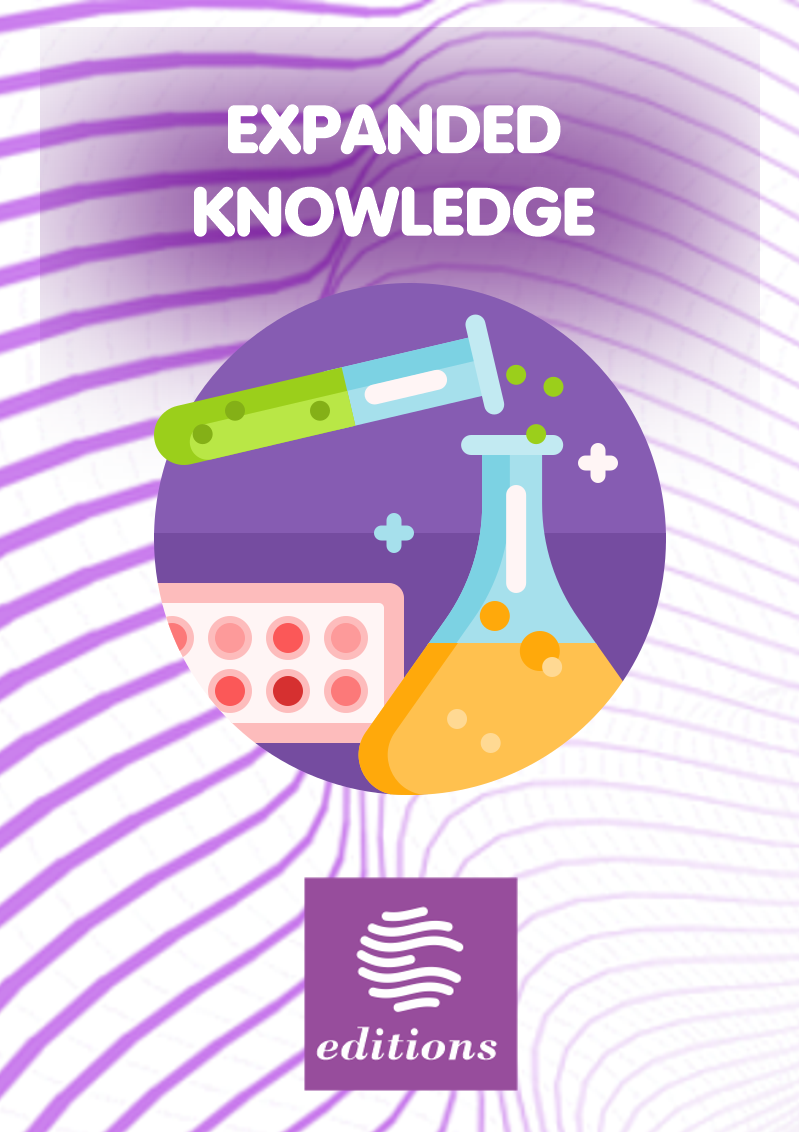Impacts of caffeine consumption in the workplace: from moderate use to dependence
Impactos do consumo de cafeína no ambiente de trabalho: da utilização moderada à dependência
Palavras-chave:
Caffeine, Occupational Health, Central Nervous System StimulantsResumo
The central focus of the article is the use of caffeine in the workplace context, with its main objective being to analyze from continued use, without leading to more serious consequences for the user, to that which leads to the development of a proper dependency. Through a review of literature relevant to the topic, a reflection is proposed that, among other aspects, classifies drug consumption into two modes, functional and dysfunctional, where in the former, it is used as a "tool" for work, without causing impairments to its performance, and in the latter, there is a change in consumption pattern, severely affecting professional performance. In the transition from functional to dysfunctional use, the drug ceases to be a means to become an end in itself, and although this does not occur with the majority of users, the conclusion is that, even in functional use, the individual's relationship with their activity is essentially adaptive, and therefore cannot be considered healthy.
Downloads
Referências
ÁGOSTON, C. et al. Addictive Behaviors Caffeine use disorder: An item response theory analysis of proposed DSM-5 criteria. Addictive behaviors, v. 81, p. 109–116, 2018.
ALSABRI, S. G. et al. Kinetic and Dynamic Description of Caffeine. Journal of Caffeine and Adenosine Research, v. 8, n. 1, p. 3–9, 2018.
ALVES, J.J. Café Brasileiro de Qualidade. Universidade Federal de Uberlândia. Faculdade de Engenharia Química. Patos de Minas –MG, 2019. Disponível em: file:///C:/Users/CLIENTE/Documents/TRABALHOS%20MARIELE/Caf%C3%A9BrasileiroQualidade.pdf Acesso em: 08 jun. 2024.
APA. American Psychiatric Association. Manual Diagnóstico e Estatístico de Transtornos Mentais - DSM-5. 5 ed. Porto Alegre, RS: Artemed, 2014.
AYRES, D.O.; CORRÊA, J.A.P. Manual de prevenção de acidentes do trabalho. – 2. Ed. - São Paulo: Atlas, 2011.
BRASIL. Consolidação das Leis do Trabalho. Decreto-Lei n.º 5.452, de 1º de maio de 1943. Diário Oficial da União, Rio de Janeiro, 9 ago. 1943. Seção 1, p. 11937.
BRASIL. Ministério da Saúde. Atendimento a pessoas com transtornos mentais por uso de álcool e drogas aumenta em 12% no SUS. 2022. Disponível em: https://www.gov.br/saude/pt-br/assuntos/noticias/2022/fevereiro/atendimento-a-pessoas-com-transtornos-mentais-por-uso-de-alcool-e-drogas-aumenta-11-no-sus Acesso em: 08 jun. 2024.
BRASIL. Ministério da Saúde. PORTARIA GM/MS Nº 1.999, DE 27 DE NOVEMBRO DE 2023. Disponível em: https://www.in.gov.br/web/dou/-/portaria-gm/ms-n-1.999-de-27-de-novembro-de-2023-526629116 Acesso em: 02/03/2024
CAPPELLETTI, S. et al. Caffeine: Cognitive and Physical Performance Enhancer or Psychoactive Drug? Current Neuropharmacology, v. 13, n. 1, p. 71-88, 2015.
CORREIA, F.F. et al. Café em doses moderadas pode melhorar a atividade cerebral. Laboratório de Neurogenética / Núcleo de Cognição e Sistemas Complexos / Centro de Matemática, Computação e Cognição / Universidade Federal do ABC. Instituto Nanocell. v. 2, n. 16. 2015.
FERNANDES, F. A. da S. Pós-Graduação Segurança do Trabalho: introdução a engenharia de segurança do trabalho. Disponível em: http://www.itop.edu.br/Administracao/App_File/file/p%C3%B3s/Introdu%C3%A7%C3%A
o%20%C3%A0%20Engenharia%20de%20Seguran%C3%A7a%20do%20Trabalho.pdf. Acesso em: 08 jun. 2024.
HARSTAD, E. et al. Concurrent vality of caffeine problems and diagnostic criteria for substance use disorders. Journal of Caffeine and Adenosine Research, v. 6, n. 4, p. 141-147, 2016.
LIEBERMAN, H. R.; AGARWAL, S.; FULGONI, V. L. Daily Patterns of Caffeine Intake and the Association of Intake with Multiple Sociodemographic and Lifestyle Factors in US Adults Based on the NHANES 2007–2012 Surveys. Journal of the Academy of Nutrition and Dietetics, v. 119, n. 1, p. 106-114, 2019.
LIMA, D. R. Cuidado!!! O popular café e a poderosa mulher... podem fazer bem à saúde. Petrópolis: Medikka Ed. Científica, 2001.
LYNCH, G.; PALMER, L.C.; GALL, C.M. The likelihood of cognitive enhancement. Pharmacol Biochem Behav., v.99, n.2, p.116-129, 2011.
MAHONEY, C. R. et al. Intake of caffeine from all sources and reasons for use by college students. Clinical Nutrition, v.38, n. 2, p. 668-675, 2019.
MCGREGOR, T. J.; BATIS, J. C. A Novel method for assessing caffeine dependence. Journal of Caffeine Research, v. 6, n. 1, p. 26-33, 2016.
MORGAN, H. L. et al.. Consumo de Estimulantes Cerebrais por Estudantes de Medicina de uma Universidade do Extremo Sul do Brasil: Prevalência, Motivação e Efeitos Percebidos. Revista Brasileira de Educação Médica, v. 41, n. 1, p. 102–109, jan. 2017.
NEVES, E. A. S.; SEGATTO, M. L. Drogas Lícitas E Ilícitas: Uma Temática Contemporânea. Faculdade Católica de Uberlândia. p. 1-9, 2010. Disponível em: < http://l.facebook.com/lsr.php?u=http%3A%2F%2Fcatolicaonline.com.br%2Frevistadacatolica2%2Fartigosn4v2 %2F34-pos-grad.pdf&ext=1439172448&hash=AcmwPpJLjrhvNewIBWqVybXVJcgn1YgKI6qRYQe0f5I2ig>. Acesso em: 08 jun. 2024.
NICASTRI, S. Drogas: classificação e efeitos no organismo. Adaptado do original do Curso de Prevenção do Uso de Drogas para Educadores de Escolas Públicas, SENAD, 2010.
RIGOTTI, D. G. Matriciamento e coprodução de autonomia-Percepções dos apoiadores matriciais do SUS-Campinas [dissertação]. Campinas: Faculdade de Ciências Médicas, Universidade Estadual de Campinas; 2016.
SANTANA, V.S.; DA SILVA, J.M. Os 20 anos da saúde do trabalhador no Sistema Único de Saúde do Brasil: limites, avanços e desafios. Saúde Brasil, 2008.
SOUZA, A.R.S. Os acidentes no trabalho rural: normas, riscos e estatísticas. Universidade Federal de Alfenas – UNIFAL-MG. Disponível em: https://sistemas.unifal-mg.edu.br/app/piepex/ bancoTCP/. Acesso em: 08 jun. 2024.
SOUZA, G.H. O café das matas de Minas: Tecnologia a serviço do agronegócio. Universidade Federal de Viçosa. Viçosa –MG, 2022. Disponível em: file:///C:/Users/CLIENTE/Documents/TRABALHOS%20MARIELE/TCC-versao-corrigida-GERALDO-HENRIQUE-GOMES-DE-SOUZA-compactado-1.pdf. Acesso em: 08 jun. 2024.
STRAIN, E.C.; GRIFFINS, R.R. Caffeine usedisorders. In: TASMAN, A; KAY, J; LIEBERMAN,J.A, editors. Psychiatry, v. 1. Philadelphia (PA);W.B. Saunders Co., 2000.
TAVARES, C.; SAKATA, R. K. Cafeína para o tratamento de dor. Rev bras anestesiol, 62, p. 394-401, 2012.
VERSTER, J. C.; KOENIG, J. Caffeine intake and its sources: A review of national representative studies. Critical Reviews in Food Science and Nutrition, v. 58, n. 8, p. 1250-1259, 2018.
WHO - World Health Organization. ICD-11 Beta Draft. 2018. Disponível em: https://icd.who.int/dev11/f/en#/. Acesso em: 08 jun. 2024.



